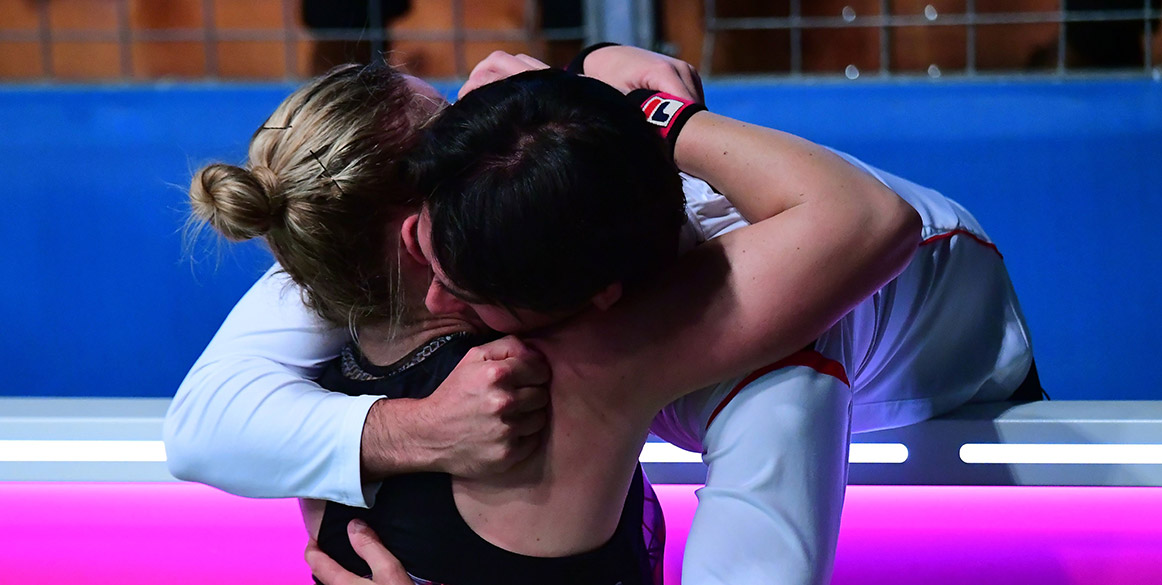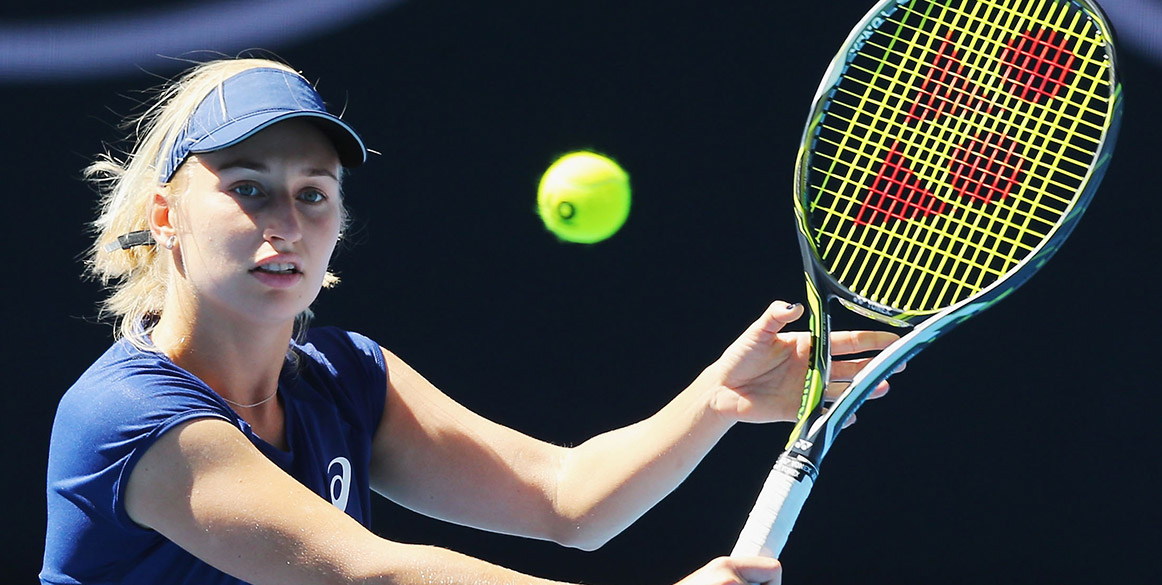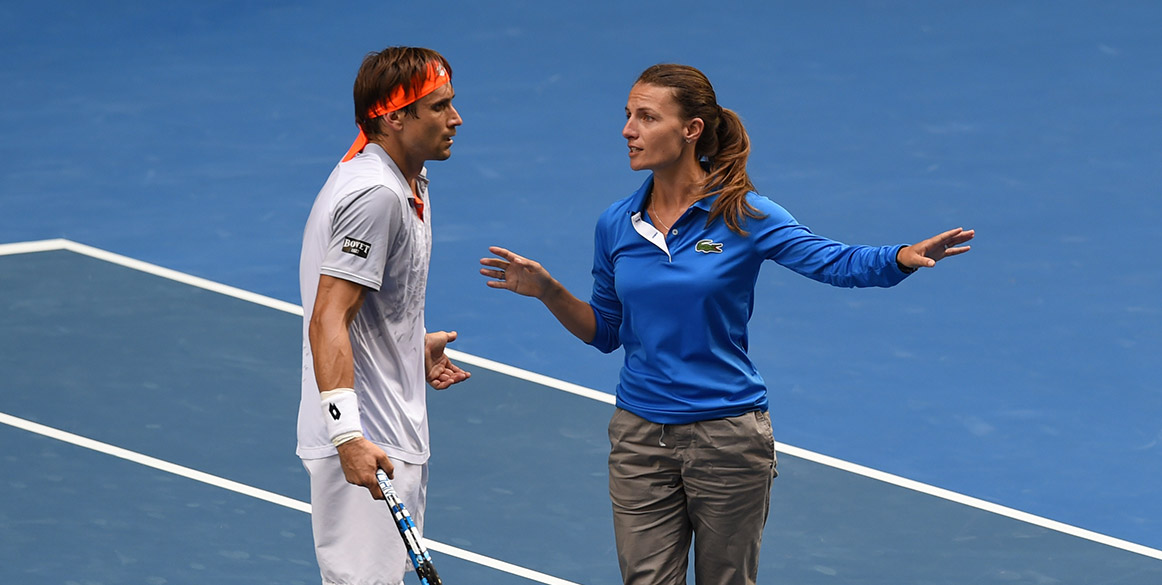In the final part of our series analysing the similarities and differences between men’s and women’s tennis, we go behind the scenes to the rule-makers and officials to get their observations and well as talk training and fitness with Daria Gavrilova.
“Just from a tennis perspective, like knowledge wise and skill wise … I don’t think there is a difference in coaching a man or a woman, from a professional point of view. Because the men have to hit the forehand just as much as the women do.”
This is the view of Sascha Bajin, when speaking recently with Jon Wertheim on the Sports Illustrated/Tennis Channel On The Baseline podcast. And it’s a quote that encapsulates the message in our three-part series looking at the differences between men’s and women’s tennis.
Perhaps those differences are simply not as great as many people make them out to be.
> Part I: the coaches’ perspective
> Part I1: the players’ perspective
Bajin, a coach and hitting partner famous for his eight-year stint with Serena Williams plus his time with Sloane Stephens, Victoria Azarenka and now Caroline Wozniacki, was asked by Wertheim whether he had a special talent for working with WTA players, given his illustrious roster of female clients. Bajin insisted that if a job came up with an ATP player, he’d be able to comfortably make the switch.
Similar views were shared a few weeks earlier on the WTA Insider podcast, when host Courtney Nguyen spoke to Thomas Drouet, coach of Timea Babos. Drouet has worked as a hitting partner with several top male and female players, including Jo-Wilfried Tsonga, Bernard Tomic and Marion Bartoli.
“I think nowadays there are not many big differences because the girls, they improved a lot, they move better. They are a bit up and down with the emotion – that’s a fact – but you can see also in men’s, it’s the same. The men, they hide (emotions) better, I think, they control better themselves to hide it, the down moments,” Drouet said.
“But the tactical part (is the same) and this is something that we really put into the game of Timea, to play more with the brain. Because tennis is a sport of statistic and if you don’t play with with your brain, you cannot get free points. If you don’t use the good tactic, it’s not working after a while.”

Thomas Drouet (R) hugs Timea Babos after Babos won the WTA Hungarian Ladies Open in February; Getty Images
With these similarities in mind, it could seem a little puzzling that certain differences in the game persist to this day that position the men’s and women’s games as distinct.
Did you know that the women and the men play with slightly different balls, depending on the court surface? Wertheim, in his weekly mailbag column on SI.com, sought the guidance of the ATP’s Gayle Bradshaw, who was able to explain how the balls differed.
“Although on hard courts they are referred to as the ‘women’s’ ball, it is actually a ‘Regular Duty’ ball with the ‘Extra Duty’ ball used for men’s matches. For the men, a regular duty ball is used on clay and the extra duty is used for hard courts while the women use the regular duty ball on all surfaces,” said Bradshaw, the ATP’s Executive Vice President, Rules & Competition. “The feel of the regular duty ball versus the extra duty ball is that it is lighter and more lively (faster) whereas the extra duty ball has a heavier feel. However, the weight of both balls must fall within the same range to be approved (56.0 to 59.4 grams).”
Speaking with Tennismash, Bradshaw gave a little more detail about why the difference existed. “You will find that (at) most, if not all, claycourt events the men and women will be using the same ball,” he said. “Hard courts are a different story. The extra duty ball has a heavier feel for the players and does not ‘fly’ quite like the regular duty ball. There have also been comments that the extra duty’s heavier feel is a cause of arm issues with the women.
“So to condense it: the regular duty ball is livelier and suits the women’s game well, whereas the men like the feel of the extra duty ball when playing on a hard court.”
Another factor demarcating the two games is the forever contentious three-versus-five set scoring format at the majors. For the uninitiated: women play best-of-three sets in Grand Slam tournaments while men play best-of-five. This has forever fuelled the equal prize money debate and has inevitably – intentionally or not – positioned the women differently to the men.
It’s not like the women have never before played five-set matches. From 1984 to 1998, the final of the WTA Championships in New York – now known as the WTA Finals and staged in Singapore – was a best-of-five-set affair, before the title match reverted to a three-set format in 1999.

Daria Gavrilova: “I think I (train) like six hours a day, maybe five.” (Getty Images)
Women train just as intensively as the men both on the court and in the gym, submitting themselves to the same exercises, regimes and hours. Attitudes persist that the women don’t possess the fitness, stamina and strength required for five-set play. Yet according to top-30 star Daria Gavrilova, that’s simply untrue.
“If we had to play five sets, we would all be able to play five sets,” she told Tennismash. “If we had to do it we’re not going to cramp or whatever. I think we’re prepared. I think for me especially I play long matches. I think I could do it.
“I think we train as girls as hard as the guys. I can’t compare – because everyone trains differently – (but) I train a lot. I have long days in training blocks. Like six hours of doing something, whether it would be running, tennis, combining everything, I think I do like six hours a day, maybe five.
“For example, today (we spoke just before she left for Indian Wells) I hit for two hours, then I did gym for an hour, then I came back for another hour, and then did intervals, which was 30 minutes. So four-and-a-half hours, and somedays I do five hours or six. And then obviously recovery as well.”
Gavrilova is well qualified to make such observations on how her training efforts compare against the world’s best men. She regularly trains at Melbourne’s National Tennis Centre – where she’s among the best Australian male and female players using the courts and gym facilities – and her partner is ATP player Luke Saville.
As a female, does she require a different approach to training? Or does she work and train in the same way as the men? “Pretty much (the same). I think tennis players, we all need to work on the same things and a lot of different (areas) – strength, movement, cardio,” she explained.
“I’ve never actually trained that much with the boys, but sometimes I do and (although) I probably wouldn’t beat them in many things (laughter), if (my trainer) Stefano would be like, OK you can do whatever the boys wanna do, like do their program, that would be fine.
“I’ve noticed with the guys that they actually don’t practise their returns as much as we do. I don’t know why, but I feel like if they’re warming up serves, they’re actually not even warming up returns. Yet girls, if we go for a hit, or we’re gonna play some points, a girl is always going to receive. Like I’ll play with Sam (Stosur) and she’ll hit some serves and I’ll always return, then we’ll switch around. Whereas boys just go like ad side and deuce side and just bang some serves.”
From all of Tennismash’s conversations with people involved in the sport, the overriding opinion is that, when it comes to technique, tactics and training, the men’s and women’s game aren’t all that different. Yet one difference often highlighted – and which Drouet touched on earlier – is the emotional side.
It may seem clichéd to resort to comparisons between overly-emotional women and stoic men. Yet the common belief is that generally speaking, there’s a distinction between competitors on the WTA and ATP tour in this area. Venerable chair umpire Eva Asderaki-Moore, who in 2015 became the first female to officiate a US Open men’s final, noted this difference when it came to umpiring men’s and women’s matches.

Spain’s David Ferrer (L) speaks with Eva Asderaki-Moore as the roof is closed due to an impending storm during his quarterfinal against Britain’s Andy Murray at Australian Open 2016; Getty Images
Minor contrasts existed, she explained, when it came to clothing logo requirements and the time violation rule (20 seconds between points for WTA matches, 25 for ATP matches). Yet a more striking difference often presented in how the men and women interacted with her in the chair.
“It’s not so much a different game, but I think the difference is on how you deal with the players,” she said. “I think with the men, you know what you get basically. If they’re happy, they’ll leave you alone. If they get pissed off or whatever, they may shout or they will tell you you got that wrong, but then that’s it. They forget about it. Whereas the women I think tend to keep it a little bit (laughter), a little bit longer. They may just look, without telling you anything, they may just give you a look and you think: OK, you’re not happy with me now (laughter).”
Yet this rather amusing observation doesn’t change the fact that, by and large, the game could be perhaps been viewed simply as “tennis” rather than defined by the sexes who play it.
A forehand is a forehand. Training is training. A win is a win.
And tennis, with male and female players competing side-by-side and each with a group of superstar players that fans love, is a leader in world sport because of this. And it’s better off for it.
23 February 2016
Tennis is a funny old game. People love you one minute and then want to drop you the next;... More
16 February 2017
In the first part of our series analysing the similarities and differences between men's ... More
8 June 2016
Transitioning between surfaces can be one of the biggest challenges in the game. Understan... More
22 September 2017
In the heat and humidity of the recent US Open series, there was a slow-mo nod to a long-r... More